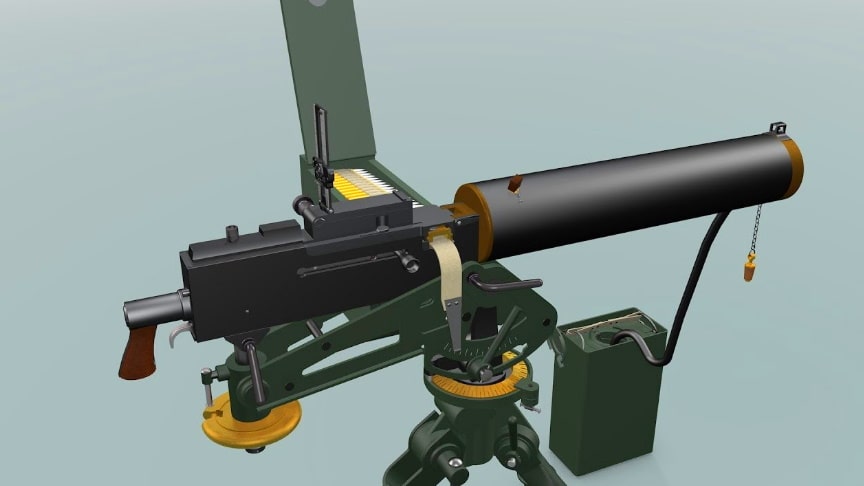John Browning’s heavy machine gun, developed in 1917, which saw action in the closing months of WW1. Firing the 30-06 Springfield cartridge, at a rate of about 450 rounds per minute. It was a crew-served, belt-fed, water-cooled machine gun that served alongside the much lighter air-cooled Browning M1919. It was used at the battalion level, and often mounted on vehicles (such as a jeep).
In 1900, John Moses Browning filed a patent for a recoil-powered automatic gun.Browning did not work on the gun again until 1910, when he built a water-cooled prototype of the 1900 design.Although the gun worked well, Browning improved the design slightly.
Browning replaced side ejection with bottom ejection, added a buffer for smoother operation, replaced the hammer with a two piece firing pin, and some other minor improvements.The basic design of the gun was still the 1900 design.At 21 kg it was much lighter than contemporary Maxim type guns.
Advertisement
The only similarities with the Maxim or Vickers are the principles of recoil operation, T-slot breechblock, “pull-out” belt feed, water cooling, and forward ejection. Its sliding-block locking mechanism saved weight and complexity, and was used in many previous Browning designs. The belt fed left-to-right, and the cartridges were stacked closer together than Maxim/Vickers (patterns copied by most guns later)./wikipedia











